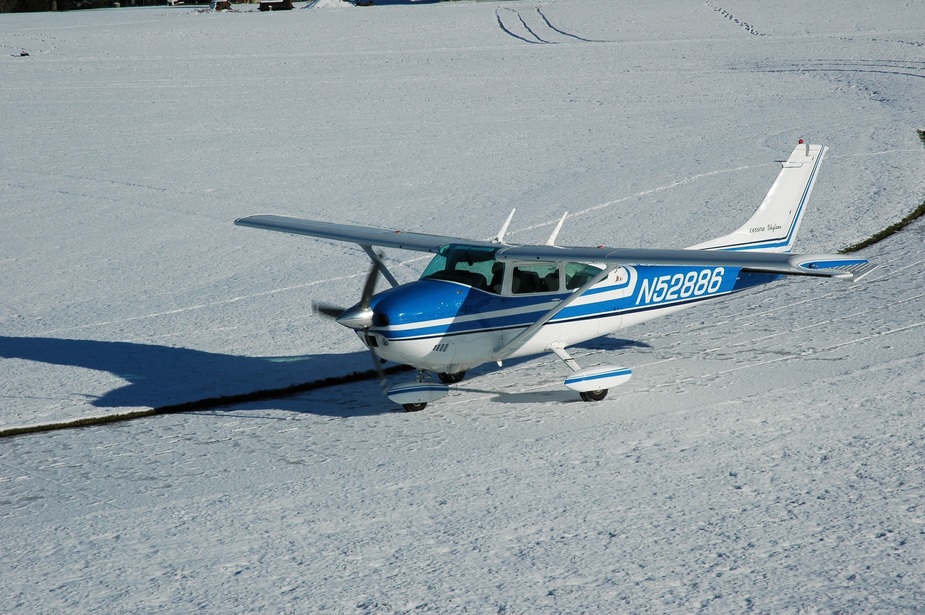Hello everyone
In the other thread about the whistling noise in IMC someone mentioned the carb heat for sustained flight in IMC. Obviously this makes sense, since carburetor ice can happen at almost any temperature, even up and beyond 20°C (OAT), and in a cloud the relative humidity is 100%. As one of those IFR pilots who don’t have that much IMC time yet (and where I learned to fly, in Colorado, clouds were always either icing or CBs), I would like to hear about your experience with carb icing in IMC:
How do you handle the carb heat in sustained flight in IMC (only when it happens or preventively)? According to my POH it should only be used reactively, however it may then be used continuously, at least if the heat is reduced to the required level (maximum is only required in the first moment, say 20 seconds or so, after ice is detected) and the engine is leaned, but not so lean as to cause detonation.
I do have a carburetor heat gauge, so maybe it would make sense to turn on carb heat continuously, leaned of course, whenever the carb temperature drops into the yellow arc when in IMC?
…to boil it down to a simple question: Do you experience considerably more carb icing in IMC than in VMC?
I ask because this could be something everyone has procedures for but I somehow never thought of it — and I just had carb icing a few months ago at OAT 12°C in blue skies during a Vy climb at about FL080.
Thanks for sharing your thoughts on this. :)
Florian
It depends on the aircraft. On the carburetted C172 that I did my instrument rating, never had carb ice either VMC or IMC.
In the Apache I did my multi in – the slightest whiff of visible moisture and both engines would run as rough as a bag of nails until you pulled the carb heats on. In IMC, it required continuous carb heat.
Irrespective of IMC/VMC, you use carb heat ON 1/ regularly to clear ice from carburettor and 2/ when you suspect carb icing (rpm drop)
So many will argue that even with carb heat ON it will not give you full protection from carb icing as ice can may still form deep in throttle/intakes, once formed then there is no way you can clear it by heat ON/OFF, so better let it form ahead in the intakes with heat OFF then clear it heat ON as it should be effective
Honestly, if I fly in conditions where carb get iced with heat ON, I doubt there is not much you can do about it playing with heat ON/OFF?
My understanding, flight icing conditions (“cold moisture” = freezing IMC) and carb icing conditions in carburettors (“cooled humidity” = IMC/VMC at any temperature) has less to do with each other than we think, the thermodynamics of the latter involve changes in pressure and volume (iso-enthalpie), the former happens at constant pressure (iso-bar) but I am more inclined to think “cold moisture” hints to “cooled humidity”: cold IMC → cold visible moisture → cooled humidity → carb icing 
In theory, in a very humid day one should expect load of carb icing 4000ft before entering into IMC…
Yes, that’s among the reasons why I’m asking. There isn’t necessarily a correlation, because the carburetor makes it’s own little icing condition whether it’s VMC or IMC outside… but let’s see if there are more pilots saying their carburettor picks up ice more in IMC than VMC.
In our Cessna 182P (1974 vintage) with the original engine, we got carbuerator ice much more frequently in IMC than VMC. Partly because of that, we changed to the IO-520D that is injected. When we changed, we retained the carbuerator heat as our alternate air inlet. That way, the alternate air is heated. It costs some power, but we only use it when the intake is iced so bad it won’t draw air, and in that condition, I prefer heat to denser air. The IO-520 has completely solved the engine roughness problem in IMC. Before the change, engine roughness was a constant problem when in visible moisture (and sometimes when we were not in visible moisture.) For us, this was the principle reason for making the change. Air Plains did the conversion.
And yes, the Skylane has full TKS de-ice.